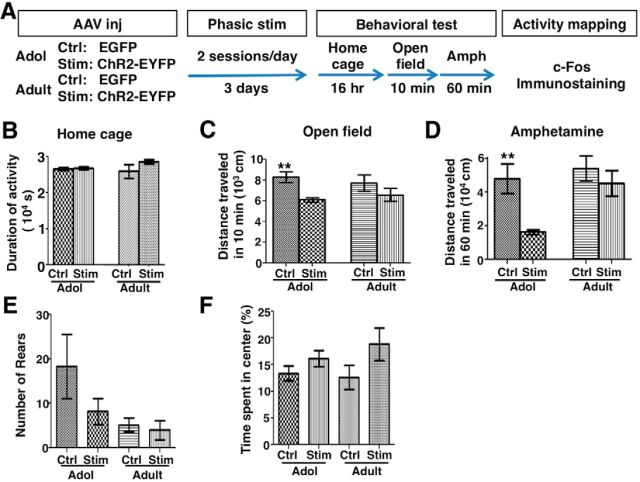Figure 7.
Phasic VTA activation led to suppressed psychomotor activity in adolescence. A, Experimental conditions. B, Duration of spontaneously active behaviors in home cages. One-way ANOVA, F(3,20) = 1.21, p = 0.332, n = 6 mice each. C, D, Total distance traveled by mice during the initial 10 min exposure to the open field (C, Kruskal–Wallis test, p = 0.032; Dunn's posttest, **p = 0.007) and the 60 min after amphetamine injection (D, Kruskal–Wallis test, p = 0.005; Dunn's posttest, **p = 0.008). n = 9 mice each, except adult controls, for which n = 10. E, Total number of rearing counts (sampled from 5 1 min video segments evenly distributed with 10 min interval after amphetamine exposure). Kruskal–Wallis test, p = 0.017; Dunn's posttests: adolescent control (Adol Ctrl) vs adolescent stimulated (Adol Stim), p = 0.795; Adult Ctrl vs Adult Stim, p = 0.351. n = 9 mice each, except Adult-Ctrl, for which n = 10. F, The percentage of time spent in the center of open field is not significantly different between the groups (one-way ANOVA, F(3,33) = 1.73, p = 0.181, n = 9 mice each, except Adult-Ctrl, for which n = 10). Data are means ± SE.

